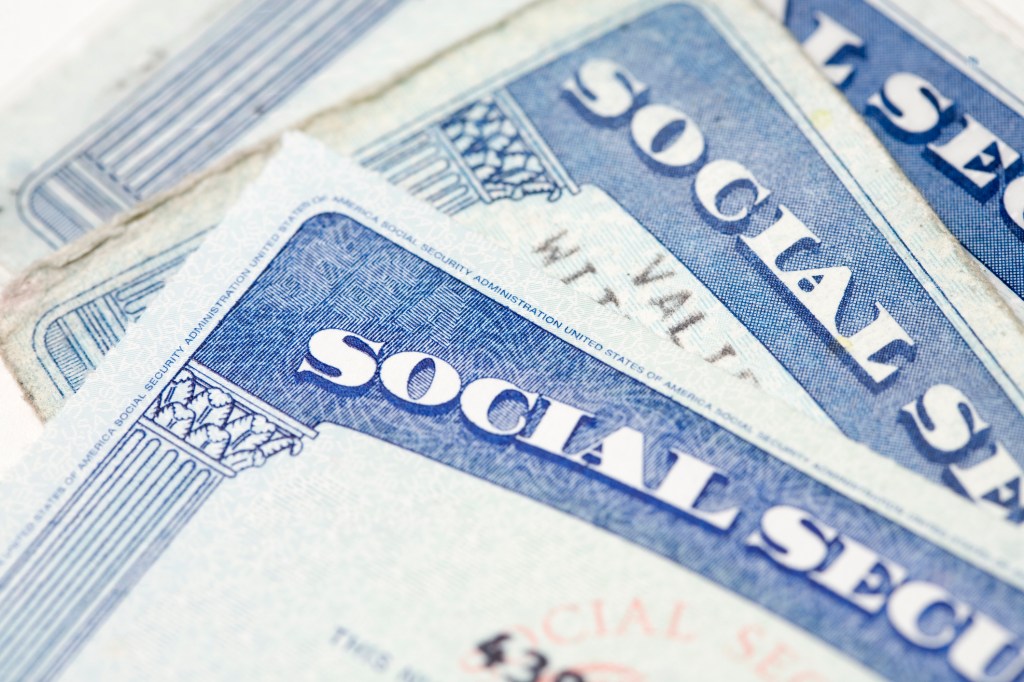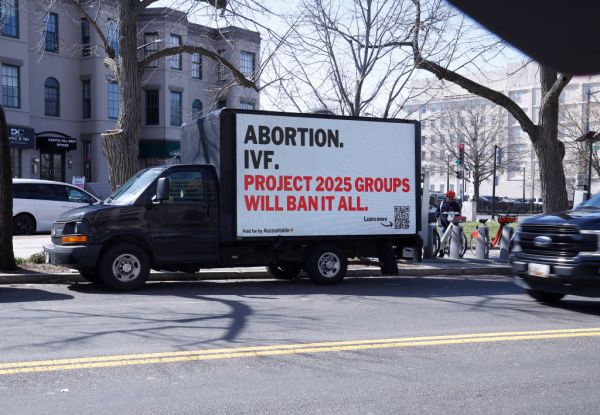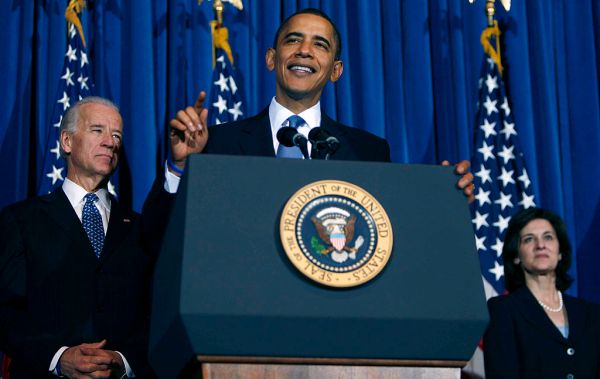The U.S. electorate’s hostility toward serious entitlement reform has a long and consistent track record. Unyielding defense of the status quo has been a winning campaign strategy for decades, and serial efforts to push major changes to Social Security and Medicare onto the national agenda have all sputtered and failed. Both parties have internalized the lesson.
Lawmakers have two means to address the problem: Spend less—through reduced benefits for high earners, more efficient health care, or raising the age of eligibility—or increase revenue through tax hikes. If elected leaders will not restrain spending, then raising taxes is the only option. The Biden administration clearly favors taking a tax-focused path, as do many Republicans (albeit mostly implicitly).
The trustees overseeing Social Security project that the program’s two trust funds will run short of funding on a combined basis in 2035. For Medicare’s hospital insurance (HI) trust fund, depletion is expected in 2028. The impending exhaustion of these trust funds could be the impetus for moving ahead with tax hikes or—if that constraint is pushed aside through various maneuvers and gimmicks—it could be the effect that escalating program expenditures are having on annual federal borrowing and total debt. Either way, the pressure is now building and will not dissipate anytime soon.
A plan relying mainly on higher taxes to keep these popular programs afloat likely would encounter less resistance than one with benefit adjustments. But there are two reasons it would be difficult to get such a plan through Congress. First, the government’s fiscal shortfall is large (and is caused primarily by these programs), so the required tax hikes would be large too, and therefore controversial. Second, the Biden administration’s pledge to shield the middle class from tax hikes rules out one option favored in the past by many Democrats: an increase in the standard payroll tax rate, which has provided most of the financing for these programs since their inceptions. Finding appropriate sources of new revenue outside of the standard payroll tax might be possible, but it would require rethinking some aspects of the programs’ original designs.
The Problem
Fully paying for the nation’s major retirement benefit programs will become a pressing concern again in the coming years because of the nation’s aging population and the attendant rising medical expenses.
According to a 2022 forecast from the Congressional Budget Office (CBO), the combined cost of Social Security and Medicare will grow from the equivalent of 8.7 percent of gross domestic product (GDP) in 2022 to 13.7 percent in 2052. In 1990, their combined cost was equal to just 6 percent of GDP. The CBO expects federal debt to rise from close to 100 percent of GDP today to 185 percent in 2052.
The revenue currently devoted to financing these benefits will not keep pace, as the workforce paying taxes will grow more slowly than the size of the retired population and health costs grow faster than the overall economy. The Social Security and Medicare trustees expect income into the relevant trust funds to be just a 0.3 percentage point of GDP higher in 2050 compared to today.
Congress created trust funds for these programs to ensure the benefits promised to participants were fully financed across generations. That is no longer assured. For both Social Security and Medicare, the traditional measure of a trust fund deficit is the difference between income and revenue over 75 years relative to the size of “taxable payroll,” which is a measure of the slice of the overall economy paid out in wages. The resulting actuarial deficit measure is useful because it reveals the size of the tax rate hike necessary to keep the trust funds solvent over the long term.
In their 2022 report, the Social Security trustees estimated the 75-year actuarial deficit at 3.42 percent of taxable payroll, which means the combined employer-employee payroll tax rate, which is 12.4 percent on earnings below $160,200 in 2023, would need to rise to 15.82 percent immediately to cover the program’s shortfall. That is a 28 percent tax rate increase.
For the Medicare HI trust fund, the 75-year actuarial deficit is 0.7 percent of taxable payroll, which suggests that the standard HI payroll tax rate, now 2.9 percent (with workers and employers each paying a 1.45 percent tax), would need to jump to 3.6 percent, or 24 percent higher. (The Affordable Care Act added a 0.9 percentage point payroll tax for wages above $200,000 annually for individuals and $250,000 for couples, paid only by the wage earners.)
Spending from Medicare’s other trust fund, for supplementary medical insurance (SMI), is an even heavier fiscal burden than HI, but its costs are obscured by offsetting transfers from the general fund of the U.S. Treasury. In the 2022 Medicare trustees’ report, SMI expenses are projected to rise from 1.9 percent of GDP currently to 3.4 percent in 2050. Beneficiaries pay 25 percent of SMI through premiums, with the rest financed by general fund transfers. The implication is that a 1.1 percentage point of GDP increase in costs for SMI (75 percent of the 1.5 percentage point increase) will be financed from the general fund. With no specific tax source dedicated to covering these costs, the government would be forced to borrow more from the public to meet its obligations.
Social Security 2100
The evolution of the most prominent Democratic plan for covering Social Security’s deficit shows how difficult it will be to rely on tax hikes alone to solve the problem.
When it was introduced in 2019, the legislation included two substantial tax hikes. First, the plan would have subjected wages above $400,000 annually to the Social Security payroll tax. These wages would also count toward higher future benefits under a revised formula. A perverse effect of this policy would be to count wages above $400,000 in the Social Security benefit formula but not those below $400,000 and above the current taxable wage limit ($160,200 in 2023).
The second major tax provision of the original Social Security 2100 plan would have increased the Social Security payroll tax rate to 14.8 percent through annual 0.1 percentage point hikes spanning 24 years. Social Security’s actuaries estimated the plan’s tax hikes would reduce the program’s actuarial deficit by 3.8 percent of taxable payroll. The plan’s sponsors also recommended spending a portion of the added revenue on new benefit commitments. Overall, the plan was estimated to keep the program’s trust funds solvent for 75 years.
In 2021, the sponsors of Social Security 2100 revised it to conform to President Biden’s stated pledge not to raise taxes on households with annual incomes below $400,000. Thus, this newer version of the plan omits the general payroll tax hike which was central to projections showing the trust funds would remain fully solvent on a permanent basis. Without that tax, the actuaries estimate the plan will delay the trust fund exhaustion date only to 2038 (it is 2035 in the most recent trustees’ report) despite imposing more than $1 trillion in new taxes in the first decade. The plan also would leave the program with a long-term deficit of 1.71 percent of taxable payroll. The actuaries’ cost estimate would have been even less favorable if the sponsors did not terminate the plan’s large benefit expansions after only five years (which is a transparent device for obscuring the actual cost of what is being proposed).
Social Security 2100 also would change key aspects of the program’s original design. From the time it was introduced in the 1930s, Social Security has been a contributory program in which benefits are tied directly to the amount of taxes paid while working. Because higher-income workers have more capacity to save for their own retirements, they have never been required to participate in Social Security beyond a certain level of annual income (again, $160,200 in 2023).
Social Security 2100 would prioritize progressive taxation over maintaining this principle. While there are potentially many sound reasons for revisiting the program’s original construction, it should not be done while still contending that these entitlement benefits should never be modified because the workers have paid for them fully with their contributions. The plan would also have the rather jarring result of directing even more government benefits to millionaires, even if the taxes imposed by the plan on these same millionaires would be even higher.
Medicare and the NIIT
The potential tax options for Medicare are more diverse than those for Social Security because the insurance value of Medicare coverage is the same for all participants, irrespective of their wage histories. Workers become eligible for Medicare HI after 10 years of payroll tax contributions (so long as their earnings are above a de minimis quarterly threshold), and its value is not altered if their earnings are high or low, or if they pay taxes for 11 or 50 years.
The separation of tax payments from the value of covered benefits has allowed Congress to diverge from the program’s original reliance on a Social Security-like payroll tax. Since 1994, there has been no upper limit on the annual amount of covered earnings that are subject to the Medicare HI payroll tax. Further, as noted, Congress in 2010 increased the HI tax for workers with incomes above $200,000.
In its 2022 budget submission to Congress, the Biden administration proposed placing a new source of revenue into HI from an amended version of the Net Investment Income Tax (NIIT). The NIIT is a 3.8 percent tax—also created by the ACA in 2010—that applies to the non-wage incomes of individuals with incomes above $200,000 annually ($250,000 for couples). The administration’s proposal sought to ensure that owners of pass-through businesses (sole proprietorships and others that are not subject to the corporate income tax) would pay either the NIIT or self-employment contribution taxes (the parallel tax to the payroll tax for employees) on all of their incomes, and also sought to shift all revenue from the NIIT into the HI trust fund. The Committee for a Responsible Federal Budget (CRFB) estimated this plan would increase revenue by $235 billion over a decade and also redirect $430 billion from the existing NIIT to the HI trust fund. Along with other minor changes, the plan would delay the depletion of HI’s reserves to 2040.
Putting NIIT revenue into HI would be a notable departure from how the program has operated to date. Currently, HI receives revenue only from payroll taxes and a small portion of the income tax collections tied to Social Security cash benefits. Sending NIIT revenue to HI would open the door to financing the program from other revenue sources that do not resemble “worker contributions.”
A further complication is that the NIIT was used in 2010 to finance non-Medicare spending authorized by the ACA. Shifting the revenue from the general fund of the Treasury to HI would mean that the same revenue source was used to finance two separate streams of federal spending.
The Political Challenge and the Budget Process
The difficulty Congress would encounter if it pursued a revenue-only solution to the entitlement problem can be seen in what transpired in 2021 and 2022. The Biden administration had an ambitious set of tax increases it wanted Congress to approve as part of its Build Back Better initiative, which would have raised in excess of $1.6 trillion over a decade. In the end, opposition from Democrats forced a major downsizing of the plan. The final bill, relabeled the Inflation Reduction Act, included $470 billion in additional revenue over 10 years.
It is notable that Democrats could not push through a larger tax hike despite controlling Congress and a budget process—via reconciliation—that would have allowed them to overcome unified Republican opposition.
Still, the door remains open to a tax-focused solution for rising Medicare costs using budget reconciliation, which would allow enactment of new revenue measures on a party-line basis.
This option is not available for Social Security, however, which cannot be amended in a reconciliation bill pursuant to the current rules. (It would be possible for Congress to raise taxes to pay for rising Social Security expenses without depositing the revenue into the trust funds. A subsequent non-reconciliation bill could transfer equivalent amounts from the general fund to the trust funds.)
In sum, while it is theoretically possible for a fully Democratic Congress to enact a tax-focused solution to rising entitlement costs (and bypass Republicans in the process), the political hurdles would be high, and it would be complicated to resolve the Social Security challenge. (Of course, this route is fully closed at themoment because the Democrats do not fully control Congress, but it is not out of the question that the party could find itself in 2025 in the same position as it was in 2021 and 2022.)
Given these difficulties, it remains most likely that Congress will have to address the fiscal stress caused by rising costs for Social Security and Medicare on a bipartisan basis. More revenue certainly can be part of the solution, but serious structural reforms should be on the table for consideration too.
With both parties taking responsibility for whatever then emerged, the political blame would be widely shared, as would the credit for putting these important programs on a more sustainable trajectory.








Please note that we at The Dispatch hold ourselves, our work, and our commenters to a higher standard than other places on the internet. We welcome comments that foster genuine debate or discussion—including comments critical of us or our work—but responses that include ad hominem attacks on fellow Dispatch members or are intended to stoke fear and anger may be moderated.